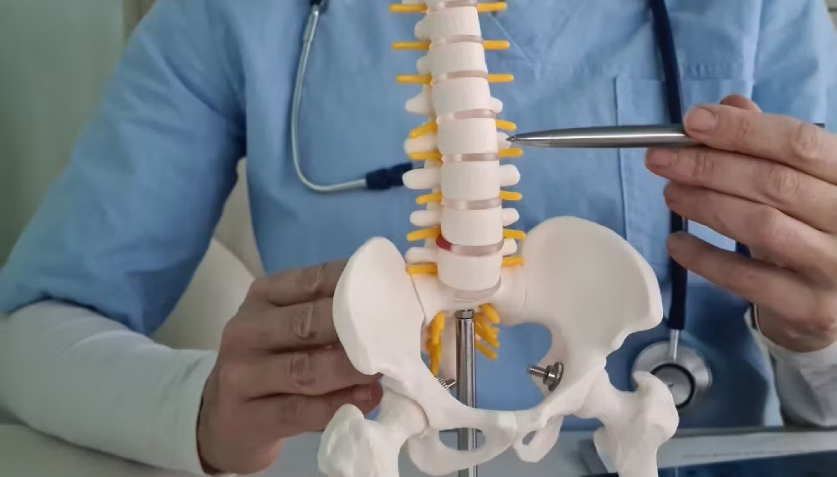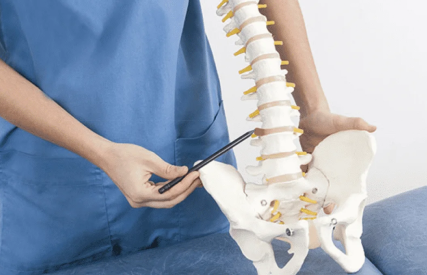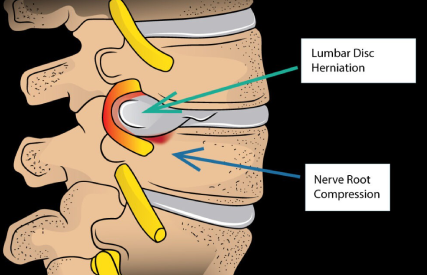
Personalized Care for Your Spine
I understand how debilitating a herniated disc or acute lumbar disc prolapse can be. Everyday tasks like walking, sitting, or bending become painful, and it can deeply affect your quality of life. I perform lumbar disc surgery using advanced techniques to provide targeted relief while ensuring faster recovery.
With modern procedures such as microscopic tubular discectomy and tubular discectomy, patients experience precision surgery with minimal tissue disruption. I prioritize patient comfort, individualized care, and long-term spine health.
- Pain relief with precision surgery
- Faster recovery through minimally invasive techniques
- Personalized treatment for each patient
Understanding Lumbar Disc Prolapse
A lumbar disc prolapse occurs when the soft nucleus inside the disc pushes through the outer layer, pressing against spinal nerves. This leads to pain, numbness, tingling, or weakness in the legs (sciatica), and sometimes difficulty walking or standing for long periods. Not every disc bulge causes pain, but if it affects the nerves, it can severely impact mobility.
Herniated discs most commonly affect the lower back, though similar problems can occur in the neck. Early diagnosis and appropriate treatment, including minimally invasive surgery like micro tubular discectomy, can prevent chronic pain and nerve damage.
- Nerve compression causes leg or back pain
- Early intervention prevents chronic complications
- Most patients respond well to minimally invasive surgery


Symptoms to Watch For
Symptoms of lumbar disc problems vary, but common signs include sharp lower back pain, shooting pain down one or both legs, tingling or numbness, and muscle weakness. In rare cases, loss of bladder or bowel control may indicate a severe problem called cauda equina syndrome, which needs urgent attention.
Neck-related disc bulges can cause pain in the neck, shoulders, or arms. Patients may experience tingling, numbness, or weakness in one arm, affecting daily activities like writing, lifting objects, or buttoning clothes. Recognizing these symptoms early helps us plan precise treatment.
- Sciatica: sharp pain radiating down the legs
- Tingling, numbness, or weakness in limbs
- Severe cases require urgent evaluation
Risk Factors for Disc Herniation
Certain conditions make lumbar discs more vulnerable to herniation. Improper lifting, obesity, smoking, a sedentary lifestyle, and repetitive strain can weaken disc integrity. Age-related degeneration also contributes, making the discs more prone to bulging or rupture.
Understanding these risk factors allows us to implement preventive measures and choose the right surgical or non-surgical treatment. With minimally invasive techniques, we aim to reduce trauma to surrounding muscles and ensure quicker recovery.
- Poor posture and heavy lifting increase risk
- Obesity and smoking accelerate disc degeneration
- Sedentary lifestyle contributes to lumbar strain
Diagnosis and Evaluation
Diagnosing lumbar disc prolapse involves a detailed medical history, physical examination, and imaging studies like MRI or CT scans. This helps identify the exact location and severity of nerve compression or disc bulge.
Once we determine the precise issue, I create a personalized surgical plan. Advanced techniques like microscopic tubular discectomy allow accurate removal of the offending disc fragment while minimizing damage to surrounding tissues.
- MRI identifies disc protrusion and nerve compression
- Precise evaluation ensures optimal surgical outcomes
- Minimally invasive surgery preserves surrounding tissues
Treatment Options
Initial treatment for disc herniation often includes rest, physical therapy, medications, and selective nerve root block injections. If pain persists or affects quality of life, surgery becomes necessary.
Procedures include aans microlumbar discectomy, micro tubular discectomy, or microscopic tubular discectomy. These minimally invasive techniques involve a small incision, precise instruments, and special retractors like caspar microlumbar discectomy retractor and williams microlumbar discectomy retractor, ensuring faster recovery and reduced complications.
- Non-surgical options are tried first
- Surgery is considered if pain persists
- Minimally invasive procedures speed recovery
The Surgical Procedure
During micro tubular discectomy, I make a small incision and use tubular retractors to access the affected disc. The herniated portion compressing the nerve is removed carefully, ensuring minimal tissue disruption. Advanced microscopic techniques allow precise visualization and safe removal.
This approach reduces muscle trauma, blood loss, and hospital stay, allowing patients to return to daily activities faster. Patients typically experience significant relief from leg and back pain shortly after surgery.
- Small incision with minimal tissue damage
- Herniated disc removed with precision
- Faster recovery and reduced hospital stay
Recovery and Rehabilitation
Post-surgery, patients are encouraged to follow a structured rehabilitation plan. This includes gentle exercises, proper posture, and avoiding heavy lifting until cleared. Early mobilization helps prevent stiffness and promotes nerve recovery.
I closely monitor patients during follow-ups, adjusting exercises and lifestyle advice to ensure long-term spine health. With proper care, most patients return to normal activities within a few weeks.
- Structured rehabilitation is essential
- Gradual return to daily activities
- Follow-up ensures long-term spine health
Why Choose Minimally Invasive Techniques
Minimally invasive procedures like microscopic tubular discectomy and tubular discectomy provide precision, reduce recovery time, and minimize complications. Using advanced instruments such as caspar and williams microlumbar discectomy retractors ensures optimal results.
Patients experience less pain, smaller scars, and faster return to work and daily life. This approach is especially beneficial for acute lumbar disc prolapse or persistent sciatica.
- Precision surgery with minimal trauma
- Reduced hospital stay and quicker recovery
- Excellent outcomes for nerve decompression
Conclusion – Take the First Step to a Pain-Free Life
Lumbar disc prolapse doesn’t have to control your life. With advanced procedures like microscopic tubular discectomy, micro tubular discectomy, and tubular discectomy, you can regain mobility, reduce pain, and return to your routine confidently.
Choosing the right surgeon and hospital ensures precision, safety, and long-term relief. Trust in expert care, personalized planning, and minimally invasive techniques for the best results.
FAQs
A microlumbar discectomy, including aans microlumbar discectomy, is a minimally invasive procedure to remove the portion of a herniated lumbar disc that is pressing on spinal nerves. This surgery relieves pain, numbness, or weakness in the legs (sciatica) while preserving surrounding muscles and tissues.
A tubular discectomy or microscopic tubular discectomy uses a small tube-like retractor, such as caspar microlumbar discectomy retractor or williams microlumbar discectomy retractor, to access the disc. This technique minimizes tissue damage, reduces blood loss, and allows faster recovery compared to traditional open surgery.
Most patients experience significant pain relief within days and can return to light activities within 1–2 weeks. Full recovery, including rehabilitation exercises, usually takes 4–6 weeks, depending on the severity of the disc prolapse and individual health.
Patients with persistent back or leg pain, weakness, numbness, or tingling that does not improve with rest, physical therapy, medications, or selective nerve root block injections are suitable candidates. Those with acute disc prolapse affecting mobility often benefit most from minimally invasive procedures.
As with any surgery, risks include infection, bleeding, or nerve irritation. However, using advanced techniques like microscopic tubular discectomy and tubular discectomy significantly reduces complications. Your spine surgeon will explain potential risks and take all measures to ensure a safe and precise procedure.

